Commentary Heart Sutra — Most Famous of the Perfection of Wisdom Sutras in Buddhism: Form is Emptiness, Emptiness is Form
Introduction
The Heart Sutra is the most famous of what are called the Perfection of Wisdom Sutras in Buddhism. These were written down sometime around the first century AD, and so there was a period of about five hundred years when these teachings developed, based on what was taught by the historical Buddha. The language differs somewhat, but its richness, as we will see, says a lot about how people practiced and attained realization. The teachings they then communicated were their gift, a great blessing to humanity, and to our world.
Commentary by Jason Espada
Sutra translation Thich Nhat Hanh
These Prajna Paramita Sutras were in turn part of a body of Mahayana Sutras that were all written down roughly about the same time, or within a couple of centuries of each other, including The Avatamsaka Sutra, and The Lotus Sutra. All taken together, the Mahayana Sutras express a world view and orientation to life and spiritual practice that is at once elevating and inspiring to any and all who hear about them.
[Full Heart Sutra translation by Thich Nhat Hanh bottom of this commentary.]
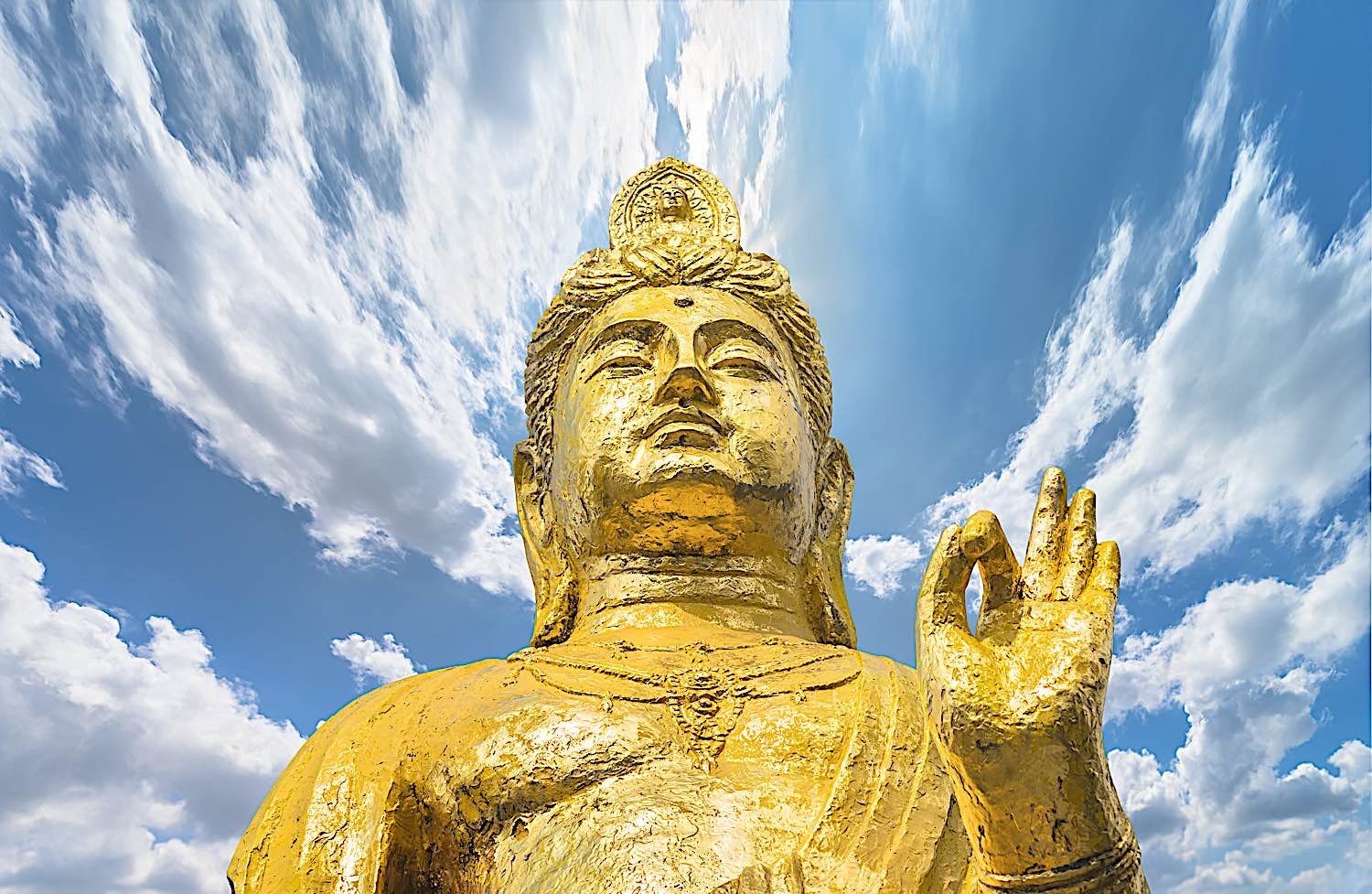
All Beings Have Buddha Nature
The Mahayana view is that we all have Buddha Nature, the potential not only to be free from suffering, but to help others in profound ways. Its’ view is that all life is infinitely precious and that we must do all we can to help one another get free from confusion and painful conditions, and reach safety and provision.
This view is completely opposite from the selfishness that would disregard, or exploit or abuse others. It is one that is free from any indifference or insensitivity, and this is not a cause for weakness – quite the opposite in fact- it is a source of unyielding strength, courage and confidence.
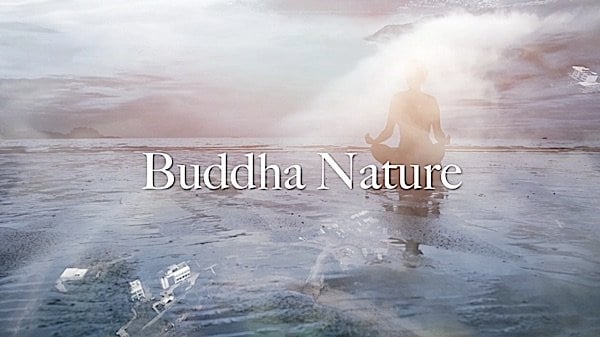
The Mahayana world view is one of there being countless worlds, and beings, and vast reaches of time, and out of great love and compassion, a Mahayanist, also called a bodhisattva, holds as sacred the vow to rescue, support and strengthen, heal and enlighten all beings, as much as needed, and for as long it is needed.
Reading the Mahayana Sutras without knowing this much, or without holding these same vows ourselves, we’ll understand them only in part, and practicing these teachings, we’ll only realize a small amount of what’s intended. Having this motivation however, they all begin to make sense, in deep ways. These are then the most inspiring teachings we can receive and practice, write, and speak about to others.

Compassion and Shunyata
When he was asked
What is the relationship between shunyata (the wisdom perceiving emptiness) and compassion?
The Dalai Lama answered:
The idea of shunyata, I think, brings the aim, the possibility of the cessation of suffering, so that is an immense help for compassion, because compassion is a desire to get rid of the suffering of other beings. So once you see the possibility of the cessation of suffering, your concern for their suffering becomes something realistic, otherwise it’s just wishful thinking. So that’s the connection…
Thinking about this deeply brings great joy and determination to accomplish these teachings ourselves, and to communicate what we have found to others.
What are all together referred to as Buddhist Wisdom Teachings can be divided according to the era in which they were formulated, and the language that was used and passed down to the present day. What is essential to realize however is that they are all pointing to the same truth. They all enable the same freedom and capacity. Different language and emphasis may be more suitable for some, but they all lead to the same place.

Annata — No Self
The Historical Buddha referred to annata – no self. Buddhadasa Bhikku, the 20th Century Thai Master said, that essentially the meaning of these teachings are that ‘Nothing whatsoever should be taken as I, or mine’.
In the centuries following the Buddha’s life, countless people practiced and accomplished his teachings. Gradually, and out of compassionate insight into what was needed, new language emerged, and supporting teachings were encouraged. These were written down first as these very Perfection of Wisdom Sutras we have the joy of studying and practicing today.
In subsequent centuries, adjusting to the mistakes that were most commonly made by people who engaged these potentially liberating teachings, further precise explanations were developed, as we find in the Middle Way teachings. All of these have the same purpose, and all lead to the same realization, without err.
We can take up the path of a scholar, or someone who benefits from extensive study and the application of reason, looking deeply into our experience that way. We can also take up an intuitive path, not needing to reason or engage the intellect too much, and this can be an entry point to the realization. We can go directly into the experience of our True Nature, understanding the Nature of Mind.
Each person is different and will have to see for ourselves what approach works best for us, and brings us the fullest results. We are truly blessed to be born in this era, when there are so many liberating and enlightening teachings available, and so many exemplary holy beings we can follow and learn from.
My endless gratitude goes out to Lama Yeshe and Thich Nhat Hahn; to Khenpo Palden Sherab Rinpoche, Longchenpa and Je Tsong Khapa; to Lama Lodro, Bokar Rinpoche, the Sixteenth Karmapa, and the Thai Forest Masters, Ajaan Mun, Ajaan Lee, Ajaan Chah, and their students, the accomplished teachers Ajaan Passanno and Ajaan Amaro….
Here follows my commentary on the Heart Sutra. May all beings benefit.
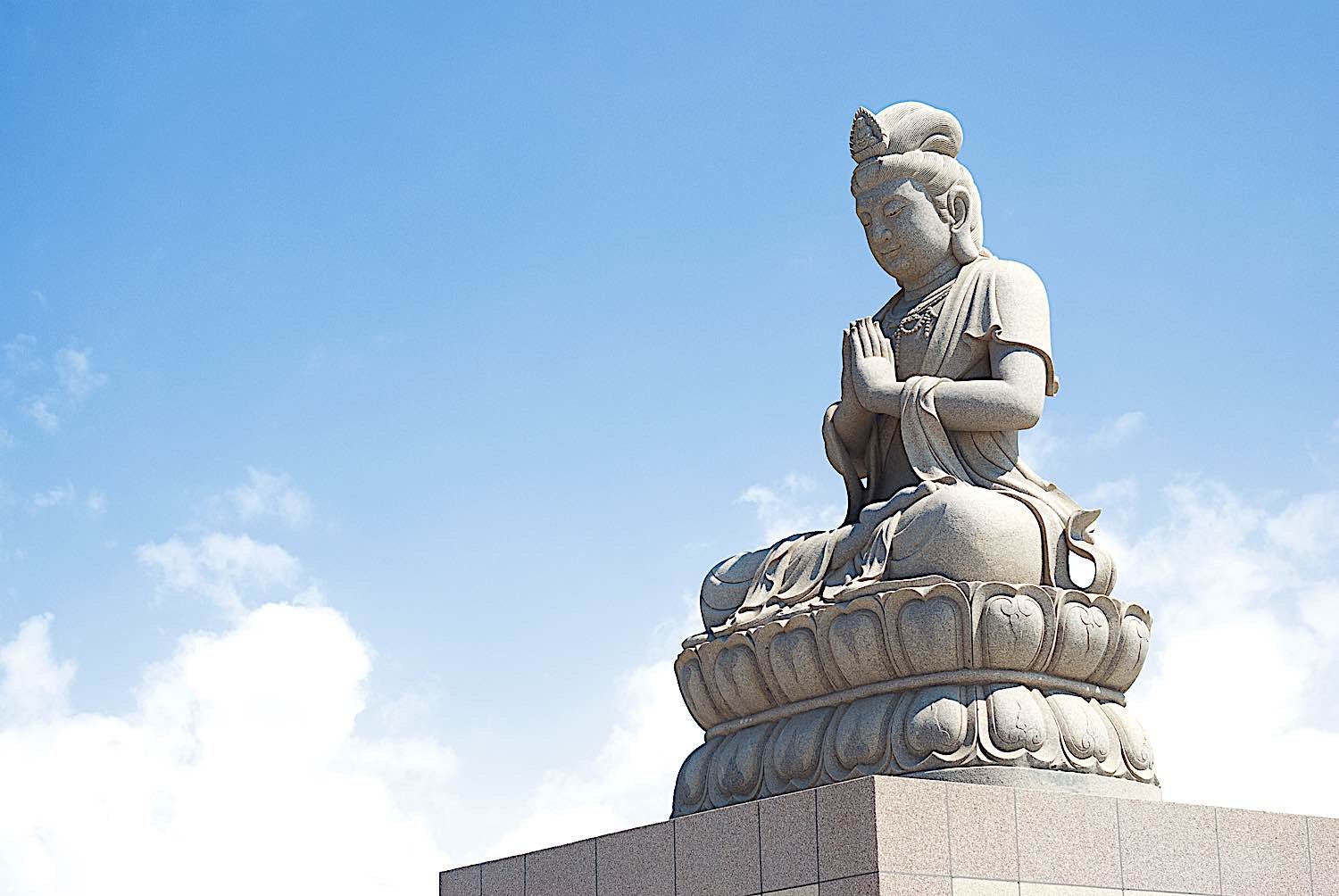
Avalokiteshvara — Our True Nature
If we are able to understand the first word in the Heart Sutra, we can understand the entire teaching, as well as the meaning of all of the Perfection of Wisdom and the Mahayana Sutras.
It may seem incongruous at first glance that Avalokiteshvara, the Bodhisattva of Compassion is introduced right away in this quintessential Perfection of Wisdom Sutra, until we recognize the significance of compassion in the Mahayana. Without it, we may gain great understanding, even to the point of being able to completely free ourselves from suffering, but we will not yet be fulfilling the purpose of the Buddha’s teachings, for ourselves or for others.
Compassion is not only essential when we’re engaging this path, of awakening, but it is the chief characteristic of all Buddhas and Bodhisattvas. Their activity is entirely aimed at alleviating the suffering of beings in the six realms in temporal and ultimate ways.
Avalokiteshvara is our true nature. It is that
‘great treasure of compassion / not aimed at true existence’,
As it says in the prayer to Je Tsong Khapa.
It is that
‘true Mind of every sentient being (that) itself teaches and leads each sentient being’
As it says in the Awakening of Faith Shastra.
We may become estranged from this True Nature, and this is what Buddhism in general and its Wisdom teachings, in particular, are for — to help us to recover this essential knowledge. How do we do this? If we recognize the import of what is being talked about at a glance, that is enough to spark realization. Why then say more?
Check it out. If you need more reflection or to engage what a teaching indicates from different points of view, or for longer period of time, there are short, medium and longer expressions of this same teaching. There is even a poetically named ‘Perfection of Wisdom in One Hundred Thousand Lines’, which is a way of saying, these verses literally go on without end, because the truth they indicate likewise goes on…
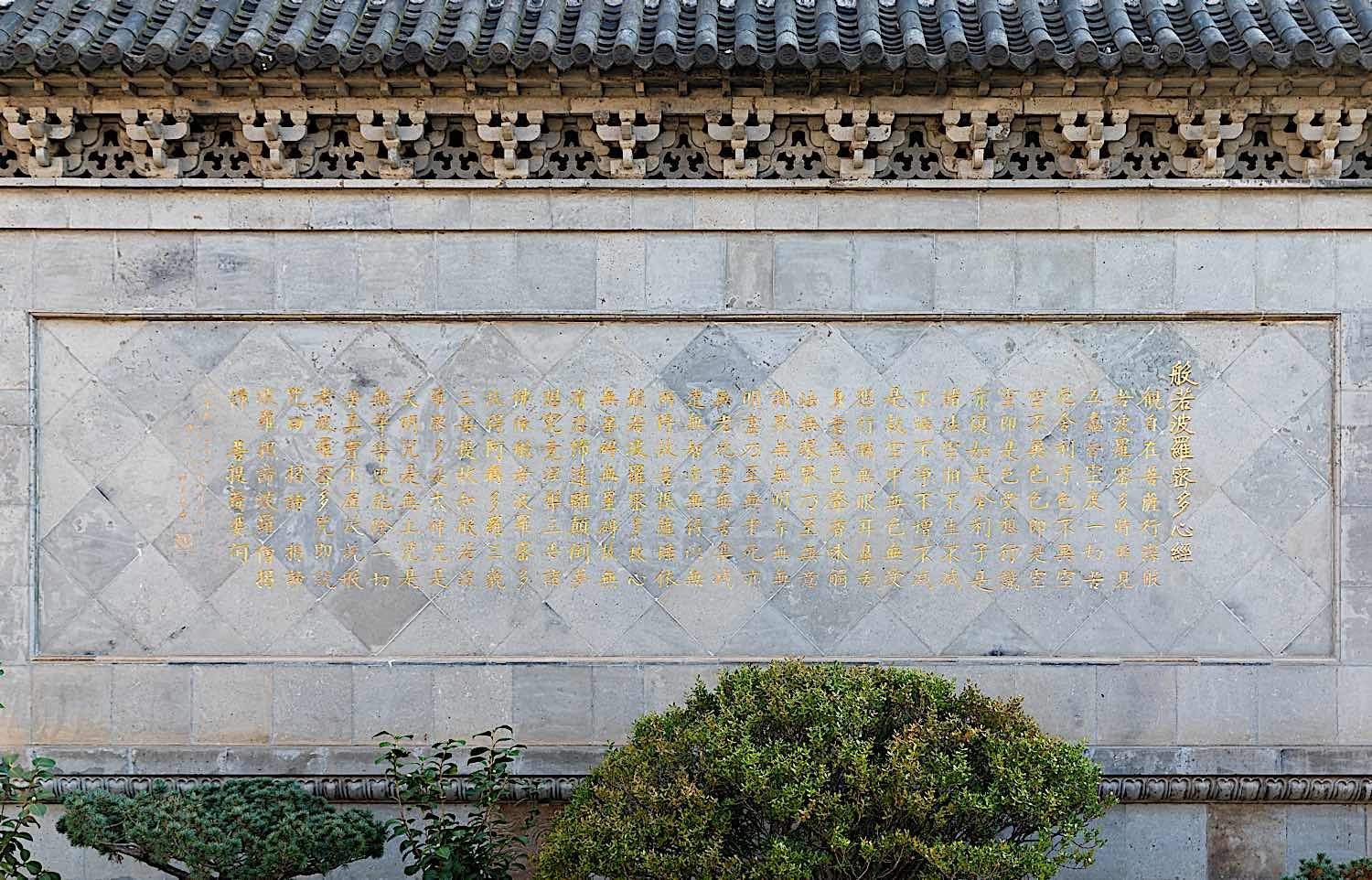
Compassion Speaks: Avalokiteshvara
We may think it’s enough to have a sharp intellect when studying a wisdom tradition, but this one word, Avalokiteshvara is telling us we need to use our heart to understand these teachings. If we meditate on the life and activity of the Bodhisattva of Compassion, it will tell us everything we need to know about the Mahayana, the Six Perfections, the Prajna Paramita, and the Heart Sutra. Saying from the beginning
Avalokiteshvara Bodhisattva
The beginning of the sutra, “Avalokiteshvara Bodhisattva” underscores the nature of the compassionate activity of the Buddhas. It should awaken in our mind the sense of its vastness and immutable purpose. It is meant to raise up our faith and devotion, and lift up our mind and heart to that level. Such appreciation and respect leads to our learning and becoming more like the Buddhas.
when practicing deeply the prajnaparamita,
could be translated more simply as ‘practicing deeply the prajnaparamita’ – since Avalokiteshvara is this practice, without any gap between her nature and engaging this way of being.
As Suzuki Roshi said, ‘Strictly speaking, there are no enlightened people — there is only enlightened activity.’
What’s more, we notice that she is not just practicing, but practicing deeply. This is significant. It’s saying that to fulfill this practice requires all our energy and attention. We don’t just briefly glimpse the realization that’s described in the following lines, but we enter into their full significance, both for our lives, and the lives of all others. In this teaching, when he did this, Avalokitshvara
perceived that all five skandas
of own being are empty
and was saved from all suffering
In a single phrase, this expresses the insight into annata, or self- lessness that the Buddha realized and communicated as the key to liberation.
The names of those who, in the centuries immediately following Shakyamuni developed the teachings on shunyata are mostly lost to us. What we have are collections all centering around this core insight, expressed with new language, and supported by all the devotional and aspirational teachings that reveal this vital understanding.
When we search through form, feelings, perceptions – or our interpretations of events; mental formations, or our habitual patterns; and consciousness for what we call ourselves, we find that what we conceive of as this self is nowhere to be found in any of our experience. Its appearance is like that of a mosaic. We project an idea onto a collection, none of which alone constitute this self we grasp. It has the nature of an illusion, and seeing through this, Avalokiteshvara is free, not caught, and suffering and its cause has no basis and is no more. When we have this same insight and degree of understanding thoroughly integrated, we too will be freed without remainder. The lines continue, addressing Shariputra.
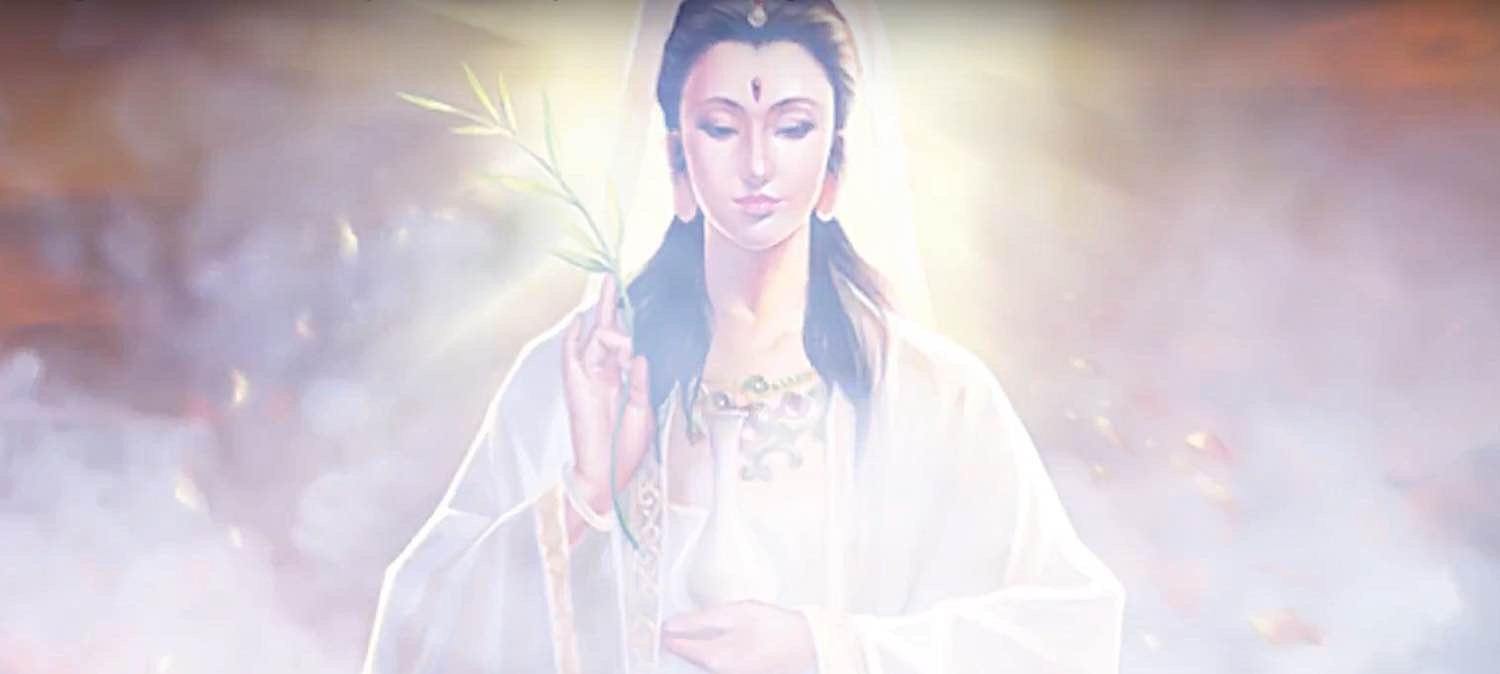
Avalokiteshvara Teaches Shariputra
Shariputra is the Buddha’s disciple, foremost in Wisdom. But who teaches Shariputra? Who else but Avalokiteshvara, the Activity of Compassion. An archetype is an aspect of the universal soul we all share, and we can say that the Buddhas represent these different divine qualities. Compassion awakens in Shariputra, foremost in Wisdom and speaks:
O Shariputra, form does not differ from emptiness, emptiness does not differ from form; that which is form is emptiness, that which is emptiness, form;
This tells us exactly where we are to look for wisdom that brings liberation. It is not outside of form and the other skandas, or aggregates. If we miss this point, we may think that form is one thing, and selflessness or annata or shunyata is another; we may misread the word emptiness (the way shunyata is translated) and see it as mere absence, like empty space. Doing so won’t free the mind, and so the teaching makes this the first point – that it is the skandas themselves, those aspects of what we call a person, that are empty, or without the self nature we project upon them, and then hold onto as if it were not the creation of our own mind.
Thich Nhat Hanh says that when we hear the word ‘empty’ we should ask, ‘empty of what?’ He answers directly, they are empty of a separate self. This means that interdependence functions, and that the preciousness of all life is upheld.
The Middle Way teachings that developed, beginning with Nagarjuna, pointed out precisely the nature of the self we grasp. One key feature of these teachings is the way they highlight what they call the gak-cha, or the refuting object. Without negating this in our understanding and practice, according to the Middle Way, we are missing the essential point. Seeing this fully, the way is open.
We can look thoroughly for this self that we impute: it seems to be independent of causes and conditions, permanent, and of a single nature. This is true whether we are talking about the self of a person, or the name of an object. It appears as something apart. When we practice liberating wisdom, this is what we realize is not there at all. It’s important that we do this inquiry thoroughly, looking between our joints and the layers of our skin. Not finding this self anywhere in the five aggregates, we rest in that realization, and familiarize ourselves more and more with the way things actually are, and the difference between how they appear and the way they exist when viewed with insight. The self we conceive is not found in form, and
the same is true of feelings, perceptions, mental formations, consciousness…
Thich Nhat Hanh’s earlier translation says that
‘…after this penetration, he overcame all pain…’
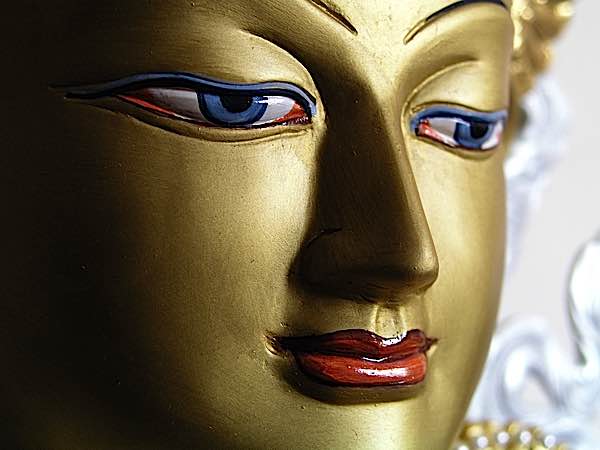
One Realization Has the Power to Liberate Us
Seeing this much is enough to free us from confusion and all its unwanted effects, of anger, pride, jealousy, lust, fear and sadness. It is the bold declaration of the Buddha and of his accomplished followers that this one realization has the power to liberate us from samsara.
For the sake of furthering this understanding, the Heart Sutra continues:
O Shariputra, all dharmas are marked with emptiness,
Here we shift from looking at how we conceive of a self in what makes up a person to all dharmas, all objects and everything we experience in our mind, such as an idea of a place or event. All these, it’s being said, are by nature inherently free of, or empty of the reified identity we ascribe to them. By seeing this in our own experience, we can extend that same insight to the world around us. The effects of doing so are profound.
As long as we grasp a self in what makes up our experience, it separates us from our ancestry, from those we are intimately involved with every moment of our lives, and from our natural world. Removing the tendency to project and then hold onto these wrong concepts places us back into our natural, ethically sensitive involvement with the world around us. We find that we inter-are, as Thay expresses it. What we do to others, or to our world we do to ourselves. This is the reason Nhat Hanh described the Diamond Sutra, another of the Perfection of Wisdom Sutras as the earliest expression of deep ecology.

Some schools of practice and realization analyze and then focus on the emptiness of an external object, such as a table or a vehicle of transport – in the old days it was a chariot, but a what we call a car does just as well. When we see how we label this collection of parts, and that none of the individual elements by themselves are the table or the car, we get closer to seeing how we project an identity or a self nature onto these things. This can introduce or reinforce the insight taught by the Buddha and his realized followers that frees all beings from suffering and its cause.
Identifying this self, the I we fashion and then take hold of as substantially existing, independent of our thought allows us to release our grip on it. Slowly this imagined self dissolves and when we learn not to take it up again, we find ourselves free from contracted views about ourselves, others and our world.
The self we have habitually, reflexively grasped and taken to be real and true has certain characteristics. It ‘hides’ and can be found by inquiry, and by tracing out who it is we feel is subject to the conditions, of being born and dying, of undergoing states of being defiled or made immaculate, of gaining and losing. If this supposed self is seen not to actually exist however, then it can be said of ourselves and all dharmas that
they neither appear nor disappear, are not tainted or pure, do not increase or decrease
When we see this much, and practice in this way, we see there is – in and of itself – no inherently existing concepts that define and isolate an aspect of form, or a place or time, or event. These are labels, provisional means of communicating, so we can say
Therefore in emptiness,
seeing this much, with this realization there is
no form, feeling, perception, mental formation, consciousness;
– the aggregates are not separate from each other, from our world. We may conceive of them this way, and use language to talk about them – ‘My arm is fine today’ and so on, but the lines of demarcation are like chalk marks on the water – they are not there except as we think of them. Each aggregate, we’ll notice influences the others, so that our thoughts or sensations effects our consciousness, which is permeable, porous, unlike how we’d think of them as discrete phenomena.
Thay Nhat Hanh translated the Heart Sutra again later in his life, as The Insight that Brings us to the Other Shore. He did this with the expressed intent of clarifying emptiness as meaning empty of a separate self.
These lines he translated then as
…in Emptiness, Body, Feelings, Perceptions,
Mental Formations and Consciousness are not separate self entities…
The following sections express this same meaning as applied to different ways of describing what we experience: the six sense organs, their objects, and the resulting sense consciousness:
no eye, ear, nose, tongue, body, mind; no color, sound, smell, taste, touch, object of mind; no realm of eyes until no realm of eye- consciousness;
the twelve links of dependent origination, that can describe either the evolution of continued samsaric suffering or its ending:
no ignorance and also no extinction of it until no old age and death and also no extinction of it;
and the Four Noble Truths:
no suffering, origination, stopping, path, cognition, also no attainment
We Should Investigate Ourselves
All this is something we should investigate ourselves, and not just take the Sutra or Avalokiteshvara’s word for it. This is too important to be heard as a mere doctrine and left unexamined. What the teaching is describing is causality, and how seeing the lack of inherent existence of the self puts an end to suffering. When that happens, when we awaken to our own depths and connection with others, all that was said of that previously conceived of self no longer applies. It’s been this way from the beginning. Though it’s was obscured by our concepts and the veiling of our light due to difficult emotions, our real nature has always been here. We have never been apart from it for even a moment, and so it’s said
With nothing to attain the bodhisattvas depend on prajnaparamita and the mind is no hindrance;
Before, not understanding the habits of our mind, how our grasping onto concepts limited us, we faced hindrances at every turn. Now, with this one insight, we are free from deluded fixation, which is like taking a garden hose at night to be a snake, and we no longer cause ourselves unnecessary hardship. What’s more, when engaging others with understanding, and compassionate care, we’re not caught by the thoughts others have about us, or themselves. We no longer participate in mass delusions, and so we can engage others in a way that leads them to freedom, which is the essential bodhisattva activity. When we do this
without any hindrance, no fears exist;
Those mind-made obstructions are no longer created and maintained, and those that were previously brought into being, or that others still believe in lose their effect. We are free to act skillfully, as the situation calls for.
far apart from every perverted view, one dwells in nirvana
Another translation here could be ‘far apart from every distorted view’. The word ‘perverted’ has ethical connotations, which may accurately apply sometimes, but what these lines more generally are referring to is wrong view, or mistaken perceptions. What’s more, practicing diligently, we reach a state where we are ‘far apart from these mistaken views’ – not only have we seen through them, but we’ve weakened their tendency to assert themselves and trigger suffering in us. Absent the afflictive emotions, we naturally dwell in safety and peace.
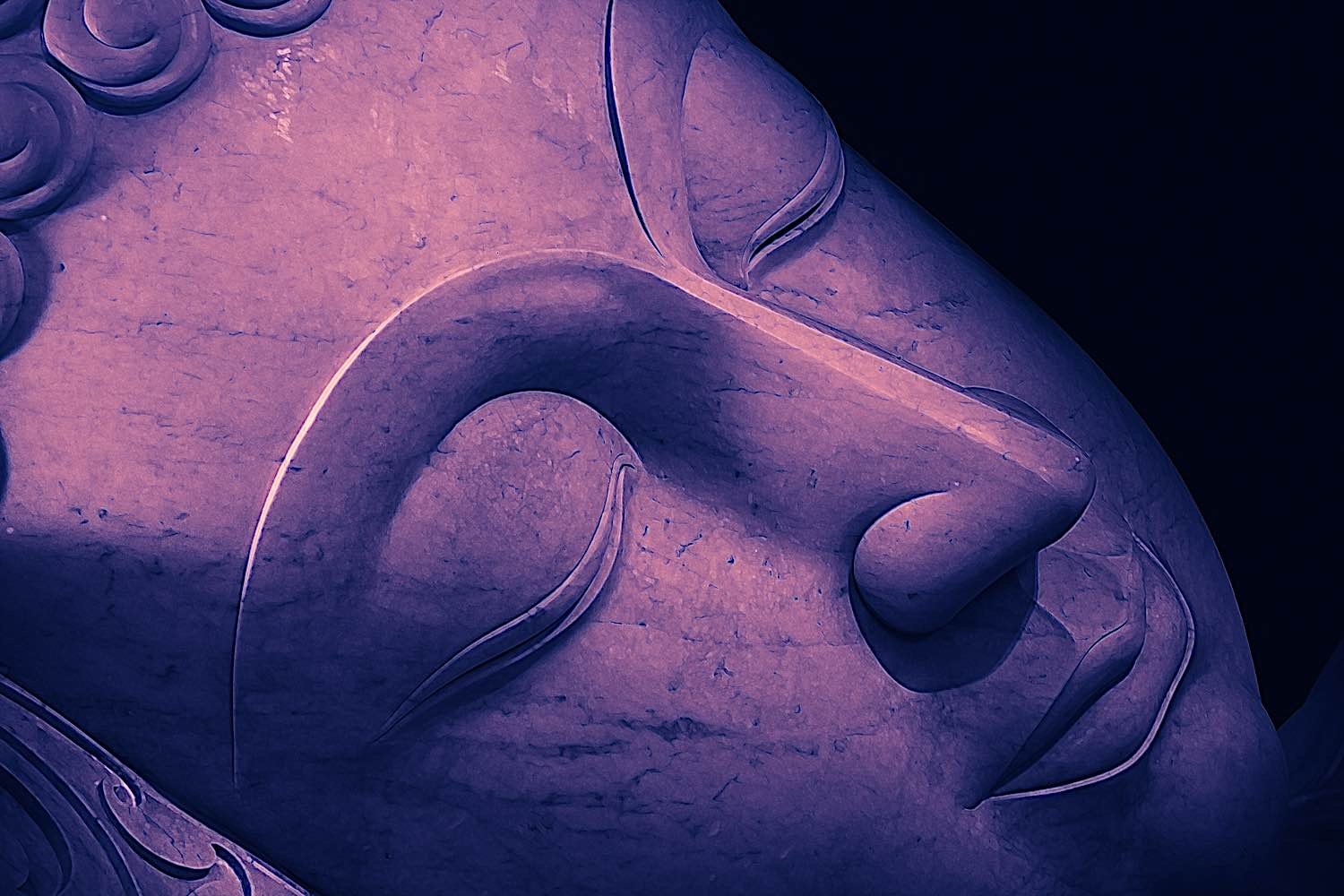
Nirvana — means extinguished
‘Nirvana’ means ‘extinguished’ – suffering and its cause have gone out in us. Whether this is a temporary state of being or a permanent one marks the distinction between a stream-enterer, and an arhat – between one first glimpsing freedom that is all of our birthright and one who is established there permanently.
In the three worlds, all Buddhas depend on prajnaparamita or we can say, all Buddhas are themselves this realization — that’s what makes them Buddhas — and attain unsurpassed, complete, perfect enlightenment;
Before, when on the path and practicing, we call such a one a practitioner – stream-enterer, once-returner, no-more-returner and arhat; or the bodhisattvas on one of the ten levels. Enlightenment has been described as ‘completely purified, and fully developed’. What has been purified, or completely removed from such a one is wrong view and whatever traces there were as habitual tendencies to act, speak or think in ways that were based on the afflictive emotions. What has been developed are all the excellent qualities we see in the best of all human beings – the peace, gentleness and generosity, caring nature, and the ability to help others.
A Buddha’s compassion goes so deep because they have successfully reached the full extent of self-understanding. This would not have been possible without great love, seeing the preciousness of this our life, and compassion, recognizing how much we’ve suffered.
Through Prajna Paramita, the cause of suffering and its cessation can be realized, great freedom and the capacity to benefit sentient beings can be attained.
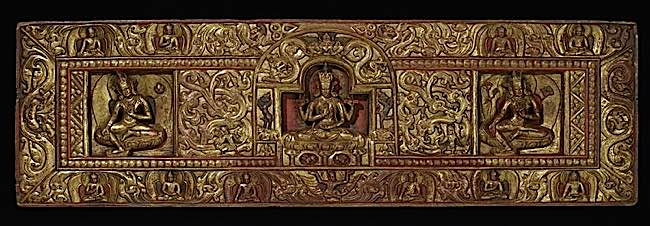
We next come to a mysterious part of the Sutra, where this teaching and its realization is described as a mantra – sacred syllables that have the power to uplift, illuminate, provide what we need, and help bring us to freedom.
Those who have studied Western Spiritual Traditions may already be familiar with what they call the power of the word. The Bible, as a sacred text, has power, to uplift, to illuminate our lives, to speak to us from the source of truth itself, its origin, and to guide us, even beyond the words on the page. Such is its power and potential.
It’s this way as well with the realization spoken of in the Heart Sutra, this Sutra itself, and the whole of the Perfection of Wisdom Sutras. I had this experience when studying and reciting the Perfection of Wisdom in Eight Thousand Lines. There is an inexplicable grace that accompanies these sacred texts that needs to be experienced to be known in full.
Not only is this teaching described then as a mantra, sacred sound, it is spoken of here as being exceptional even in this regard:
Therefore know the prajnaparamita mantra is the great transcendent mantra — it is coming from a place deeper than ego, deeper than thought. This realization, its power and the great qualities it holds within it comes from our whole nature. It’s said throughout the Perfection of Wisdom literature that the other five Perfections – Generosity, Morality, Patience, Joyful Effort and Meditation all come from this one insight – understanding, lived in our world, and throughout all worlds… This is the great bright mantra, is the utmost mantra, is the supreme mantra, which is able to relieve all suffering, and is true, not false; or because it is true, and not false, and this is verifiable, unerringly accurate, across time and cultures this is here to be known by us, and so proclaim the prajnaparamita mantra, practice so that your entire being, resonates with this realization proclaim the mantra that says
Gate, gate, paragate, parasamgate, bodhi, svaha!
which means
‘Gone, gone, all the way gone, all the way perfectly and completely gone, awake!, So be it!’

This is the teaching of all Buddhas and Bodhisattvas. This is the realization that frees sentient beings in the six realms and bardo from their confusion and suffering. This is what brings peace and health to all beings, now and in the future.
May we all practice and fully accomplish the teachings that liberate, that reveal our inherent richness, our light and natural peace, and may we share these blessings with all beings, and with all the world.
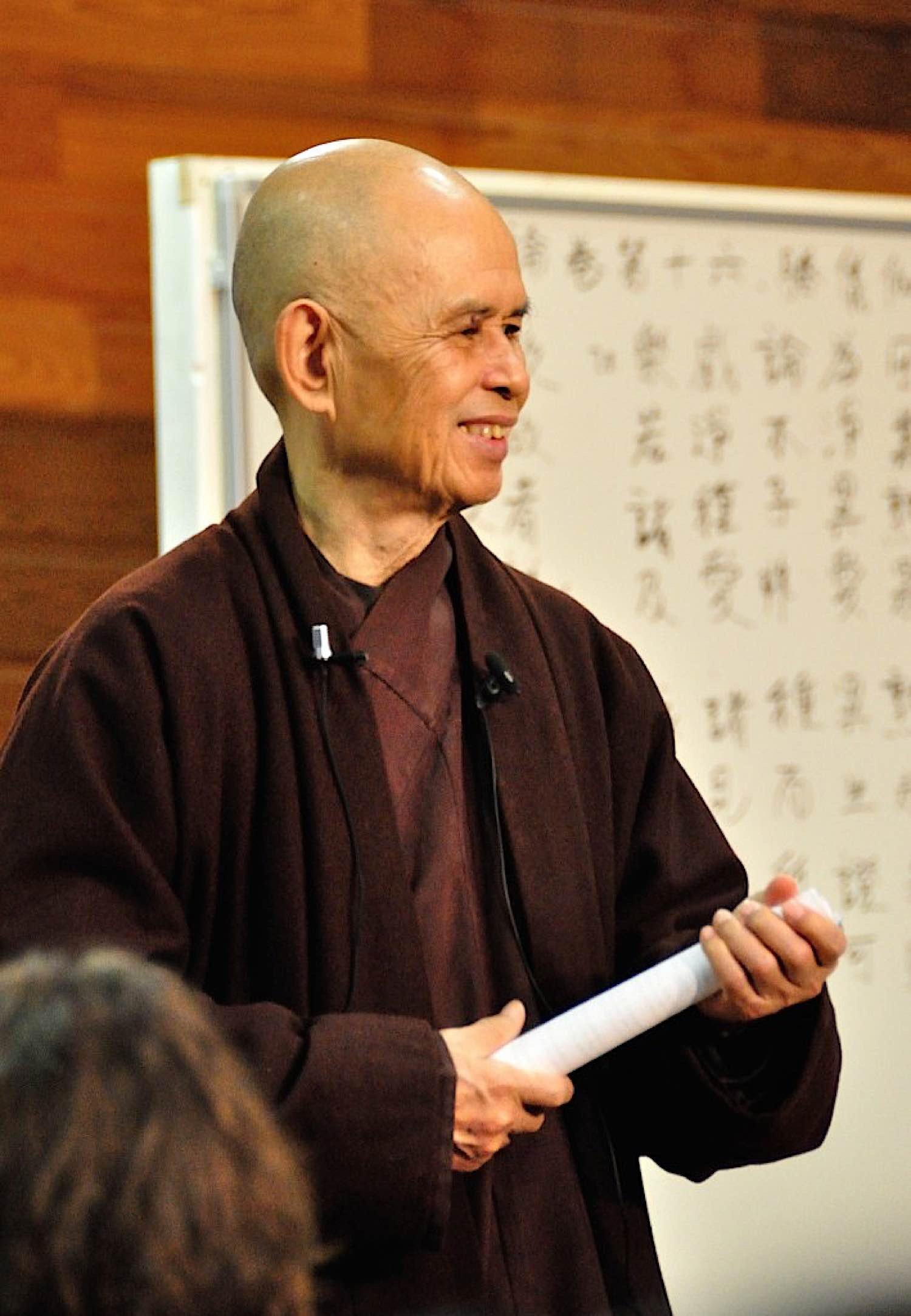
Heart Sutra in full translation by Thich Nhat Hanh
Note: In his latest translation of the Heart Sutra, Thich Nhat Han replaced “Form is Emptiness, Emptiness is Form” with “This body itself is Emptiness, This Body is not other than Emptiness.” He explains his rationale here>>
Avalokiteshvara
while practicing deeply with
the Insight that Brings Us to the Other Shore,
suddenly discovered that
all of the five Skandhas are equally empty,
and with this realisation
he overcame all Ill-being.“Listen Sariputra,
this Body itself is Emptiness
and Emptiness itself is this Body.
This Body is not other than Emptiness
and Emptiness is not other than this Body.
The same is true of Feelings,
Perceptions, Mental Formations,
and Consciousness.“Listen Sariputra,
all phenomena bear the mark of Emptiness;
their true nature is the nature of
no Birth no Death,
no Being no Non-being,
no Defilement no Purity,
no Increasing no Decreasing.“That is why in Emptiness,
Body, Feelings, Perceptions,
Mental Formations and Consciousness
are not separate self entities.The Eighteen Realms of Phenomena
which are the six Sense Organs,
the six Sense Objects,
and the six Consciousnesses
are also not separate self entities.The Twelve Links of Interdependent Arising
and their Extinction
are also not separate self entities.
Ill-being, the Causes of Ill-being,
the End of Ill-being, the Path,
insight and attainment,
are also not separate self entities.Whoever can see this
no longer needs anything to attain.
Bodhisattvas who practice
the Insight that Brings Us to the Other Shore
see no more obstacles in their mind,
and because there
are no more obstacles in their mind,
they can overcome all fear,
destroy all wrong perceptions
and realize Perfect Nirvana.“All Buddhas in the past, present and future
by practicing
the Insight that Brings Us to the Other Shore
are all capable of attaining
Authentic and Perfect Enlightenment.“Therefore Sariputra,
it should be known that
the Insight that Brings Us to the Other Shore
is a Great Mantra,
the most illuminating mantra,
the highest mantra,
a mantra beyond compare,
the True Wisdom that has the power
to put an end to all kinds of suffering.Therefore let us proclaim
a mantra to praise
the Insight that Brings Us to the Other Shore.
Gate, Gate, Paragate, Parasamgate, Bodhi Svaha!
Gate, Gate, Paragate, Parasamgate, Bodhi Svaha!
Gate, Gate, Paragate, Parasamgate, Bodhi Svaha!”

1 thought on “Commentary Heart Sutra — Most Famous of the Perfection of Wisdom Sutras in Buddhism: Form is Emptiness, Emptiness is Form”
Leave a Comment
More articles by this author
Search
Latest Features
Please support the "Spread the Dharma" mission as one of our heroic Dharma Supporting Members, or with a one-time donation.
Please Help Support the “Spread the Dharma” Mission!

Be a part of the noble mission as a supporting member or a patron, or a volunteer contributor of content.
The power of Dharma to help sentient beings, in part, lies in ensuring access to Buddha’s precious Dharma — the mission of Buddha Weekly. We can’t do it without you!
A non-profit association since 2007, Buddha Weekly published many feature articles, videos, and, podcasts. Please consider supporting the mission to preserve and “Spread the Dharma." Your support as either a patron or a supporting member helps defray the high costs of producing quality Dharma content. Thank you! Learn more here, or become one of our super karma heroes on Patreon.
Jason Espada
Author | Buddha Weekly
Jason Espada is a writer and classical musician living in San Francisco; a steward of his father’s photography, and the founder of A Buddhist Library: http://www.abuddhistlibrary.com. Over the years, he’s made a number of recordings of Buddhist teachings. These days his focus is on the natural connection between spirituality and social action. His new website is at JasonEspada.com.















In fact, the Heart Sutra is a sutta that elevates Buddhism to a higher level than other religions.